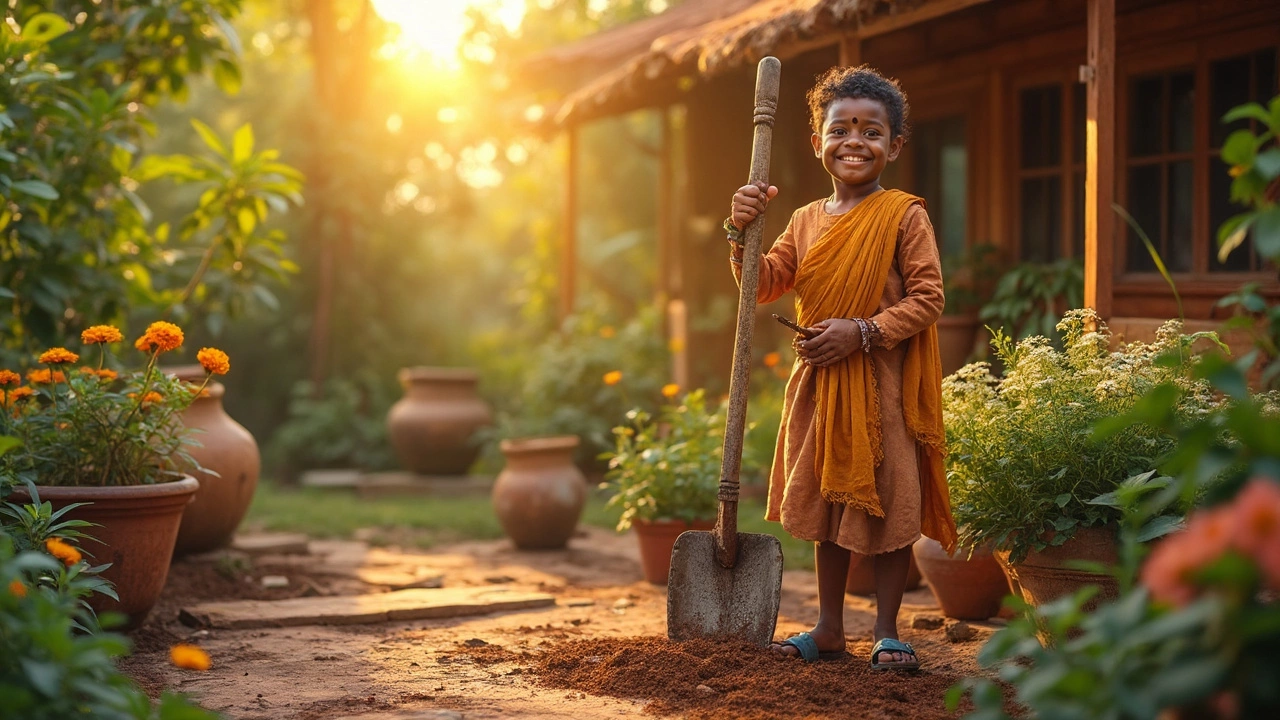A good gardener isn't defined by tools or space, but by observation, patience, and working with nature. Learn the habits, mindset, and simple practices that make gardening succeed-no matter your experience level.
Garden Tools: Essential Picks for Indian Gardens and How to Use Them
When you're working the soil in an Indian garden, your garden tools, handheld equipment used for planting, weeding, watering, and harvesting in home and small-scale farms. Also known as gardening implements, they're the real heroes behind every healthy plant, whether you're growing tomatoes on a balcony or raising vegetables in a backyard plot. These aren't just accessories—they're the extension of your hands. A rusted spade, a clogged drip emitter, or a worn-out pruner can turn a simple task into a struggle. In India’s varied climate—from dry summers to heavy monsoons—your tools need to handle heat, humidity, and hard soil. That’s why choosing the right ones matters more than you think.
Good garden tool brands, companies known for durable, locally suitable gardening equipment designed for Indian soil and weather. Also known as reliable gardening equipment makers, it isn’t about buying the most expensive gear. It’s about finding tools that last through rust, dirt, and daily use. Brands that focus on forged steel, ergonomic handles, and rust-resistant coatings make a real difference. You don’t need ten tools—just five that work well. A hand trowel for planting seedlings, a weeder for tight spaces, a pruner for trimming hedges, a hoe for breaking hard soil, and a watering can with a rose attachment for gentle watering. These five cover 90% of what most Indian gardeners do every week. And if you’re using drip irrigation, don’t forget to check your drip emitters, small devices that release water slowly and directly to plant roots in drip irrigation systems. Also known as drip nozzles, they clog easily with dust or mineral buildup, especially in hard water areas. Cleaning them monthly saves water and keeps your plants healthy.
Tool maintenance is just as important as buying them. Oil the metal parts after every few uses to stop rust. Wipe down wooden handles to prevent cracking. Store tools in a dry shed or under a tarp—never leave them out in the rain. A clean, sharp pruner cuts cleanly and doesn’t tear plant stems. A sharp hoe glides through soil instead of forcing it. These small habits mean your tools last years, not months. And when you do need to replace something, look for tools made for Indian conditions: compact for small balconies, lightweight for older gardeners, and strong enough for clay-heavy soil.
What you’ll find below isn’t a list of random tools. It’s a real collection of guides written by gardeners who’ve tried, tested, and sometimes broken their tools in the process. You’ll learn which brands actually hold up under Indian sun, how to fix a clogged drip line without calling a pro, and why some tools are useless on concrete balconies. Whether you’re growing basil in a pot or managing a small vegetable patch, the right tools make all the difference. No fluff. No hype. Just what works.
So many garden tools exist, but which one matters most? This article digs into the single most important gardening tool and tells you why it’s crucial for beginners and pros alike. You'll get useful insights, some fun facts, and practical tips on tool care and alternatives. Even if you’re just starting out, you’ll learn how to make the most of your garden with the right gear in hand.

